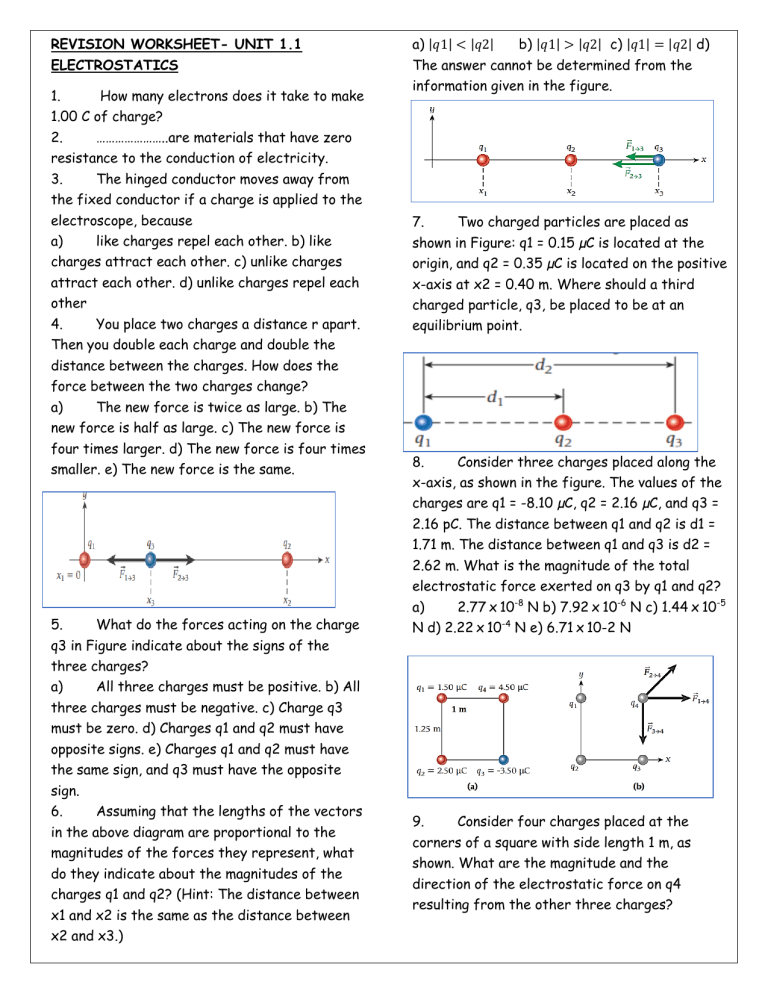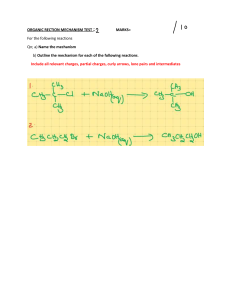
REVISION WORKSHEET- UNIT 1.1 a) |𝑞1| < |𝑞2| ELECTROSTATICS The answer cannot be determined from the information given in the figure. 1. How many electrons does it take to make b) |𝑞1| > |𝑞2| c) |𝑞1| = |𝑞2| d) 1.00 C of charge? 2. …………………..are materials that have zero resistance to the conduction of electricity. 3. The hinged conductor moves away from the fixed conductor if a charge is applied to the electroscope, because a) like charges repel each other. b) like 7. Two charged particles are placed as shown in Figure: q1 = 0.15 µC is located at the charges attract each other. c) unlike charges attract each other. d) unlike charges repel each origin, and q2 = 0.35 µC is located on the positive x-axis at x2 = 0.40 m. Where should a third charged particle, q3, be placed to be at an other 4. You place two charges a distance r apart. Then you double each charge and double the distance between the charges. How does the force between the two charges change? a) The new force is twice as large. b) The new force is half as large. c) The new force is four times larger. d) The new force is four times smaller. e) The new force is the same. 5. What do the forces acting on the charge q3 in Figure indicate about the signs of the three charges? a) All three charges must be positive. b) All three charges must be negative. c) Charge q3 equilibrium point. 8. Consider three charges placed along the x-axis, as shown in the figure. The values of the charges are q1 = -8.10 µC, q2 = 2.16 µC, and q3 = 2.16 pC. The distance between q1 and q2 is d1 = 1.71 m. The distance between q1 and q3 is d2 = 2.62 m. What is the magnitude of the total electrostatic force exerted on q3 by q1 and q2? a) 2.77 x 10-8 N b) 7.92 x 10-6 N c) 1.44 x 10-5 N d) 2.22 x 10-4 N e) 6.71 x 10-2 N must be zero. d) Charges q1 and q2 must have opposite signs. e) Charges q1 and q2 must have the same sign, and q3 must have the opposite sign. 6. Assuming that the lengths of the vectors in the above diagram are proportional to the magnitudes of the forces they represent, what do they indicate about the magnitudes of the charges q1 and q2? (Hint: The distance between x1 and x2 is the same as the distance between x2 and x3.) 9. Consider four charges placed at the corners of a square with side length 1 m, as shown. What are the magnitude and the direction of the electrostatic force on q4 resulting from the other three charges?



